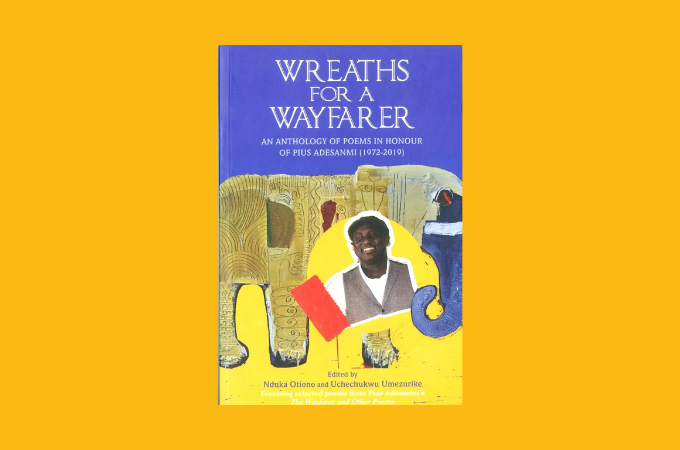
“It is hard, even for the most gifted psychic, to accurately
predict how they would react to the passing of someone
dear to them either physically or virtually.”
—Nduka Otiono, Introduction to Wreaths (xxv)
Wreaths for a Wayfarer: An Anthology of Poems in Honour of Pius Adesanmi is a literary tribute to “the poster personage of the 157 passengers, all victims, aboard Ethiopian Airline 737 which crashed en-route to Nairobi on 10th March 2019” (Odia Ofeimun, Foreword to Wreaths…). However, for those like me, Pius Adesanmi was also a poet, polemicist, professor of Comparative and Postcolonial Literature at Carleton University, and, above all else, a beautiful soul. Adesamni was an enigma of sorts, and by that, I mean that he sometimes defied straight-jacket descriptions; a restless wayfarer, an academic nomad, a consummate scholar, and a riveting social conscience whose voice kept kings awake.
Edited by Nduka Otiono and Uchechukwu Umezurike and published in 2020, Wreaths for a Wayfarer consists of 126 emerging and established contributors from across Africa, Europe, and the Americas. The assemblage of poets, ranging in race, colour, and age, in Wreaths is reminiscent of the 1975 Poems of Black Africa, edited by Wole Soyinka, and 1988’s Voices from the Fringe, edited by Harry Garuba. In his foreword, Odia Ofeimun comments that the theme and tone of the anthology echoes “the modernist temperament and style” of Chinua Achebe and Dubem Okafor’s Don’t let him Die, the 1978 poetry collection in honour of Christopher Okigbo, as well as Nduka Otiono and Epaphas Osondu’s For Ken, For Nigeria, an 1996 anthology to honour Ken Saro-Wiwa.
The degree of shock, pain and sadness orchestrated by Adesanmi’s demise has yielded a bountiful harvest of verbal wreaths, “virtual wreaths” as editors of the anthology would call them, bearing threnodic and eclectic verses, but united in their probing, examination, and deconstruction of the ephemerality of life, notwithstanding the tapestry of their forms and styles. Wreaths is structured in appropriately named sections to capture the very essence of Adesanmi’s brief but eventful sojourn on earth. The first section, “Wayfarer”, embodies poems that evoke the tone of pilgrimage, being Adesanmi’s preoccupation while alive, as he journeyed across Africa, Europe, and America teaching and breaking grounds in academic circles. The “Requiem” section encompasses tributes rendered in the form of lamentations about the poet’s country that Ndubuisi Martins, in the anthology, refers to as a “Badly Behaved Poem” (216). In paying tribute to Adesanmi, poets in this section—including Helon Habila, Lebogang Disele, Margaret Wairimu Waweru, Peter Midgley and Tade Aina—underscore the postcolonial conditions in Africa that motivate her bright stars to migrate northwards. The third category, “Homecoming”, comprises elegies that underpin our collective grief in coming to terms with the reality of Adesanmi’s passing. The fourth part contains poems selected from the late poet’s lone collection, The Wayfarer and Other Poems (2000). The selection aims to introduce readers hitherto unfamiliar with Adesanmi’s poetry to the dimensions of his creative energy and imagination. The last part, titled “Postlude”, contains a prose-poem, being a tribute delivered at the Festival of Life in honour of Adesanmi at Carleton Dominion Chalmers Centre by Anu’a-Gheyle Solomon Azoh-Mbi, Cameroon’s High Commissioner to Canada.
The very first poem in the collection, purposively titled “Introit: Coffin in the sky” by Niyi Osundare, navigates the fatality of air mishaps which brought down “fruit / Too early, too unripe” (16). A similar thematic preoccupation emerges in Segun Michael Olabode’s “Now that I know young birds die in flight”, Ian Keteku’s “Black Box”, and James Onyebuchi Nnaji’s “Flying Coffin”. The titular and thematic thrusts of these poems is akin to one of my poems, “Where Coffins Fly?” in which I refer to airplanes as “Exotic frames, technical dooms” (How Morning Remembers the Night, 2020, 13).
The sudden, and usually tragic death of young stars has always been cloaked in controversy given that many allude it to an inescapable fate that awaits the exceedingly gifted, as instances abound. However, there are others who disagree and regard it as mere coincidence, their arguments being that less talented humans have also had to die young just as there are innumerable stars, including poets, that have lived long enough to downplay the earlier argument. The deductible reasoning from both arguments here indicates that death, especially that of a young star, has a way of further popularizing the dead person, propelled by the assumed promise they held. Chuma Nwokolo, projects this view in “How to Keep the Wake for a Shooting Star”, where he observes with deep philosophical ambience, the seeming fate of every shooting star as he writes that “the destiny of a / shooting star is / brevity?” (65). The question mark, I believe, is stylistic, to wave off the tone of assertion but to indirectly imply that stars do die young as in Thomas Chatterton, Phillis Wheatley, Arthur Rimbaud, P.B. Shelley, John Keats, Emily Bronte, Rupert Brooke, Guillaume Apollinaire, Wilfred Owen, Keith Douglas, Sylvia Plath, Christopher Okigbo, Dambudzo Marechera, Ezenwa Ohaeto, and Esiaba Irobi among many others. They, as Nwokolo would have us believe, “die, to blaze on in men’s hearts” (65), a statement that is true in every dimension, even as Akachi Adimroa-Ezeigbo, particularly addressing Pius, affirms thus: “You are light; you dimmed briefly to shine forever” (178). Echezonachukwu Nduka writes in “Where to Find You: A Requiem” that “we turn to pathways now clear because you, wayfarer / dared to walk ahead” (131), and Ndubuisi Martins Aniemeka in “Returning the Light as Wreaths” agrees that “the one who goes is the / chlorophyll of time and light” (215).
The mysteries surrounding the abiku lore are interrogated in the anthology by contributors such as Adejumo Uthman Ajibola, Usman Oladipo, and myself who believes that “the gods” must have missed him so much, they had to call him home (81) while the immortality of poets, especially that of Adesanmi’s class is explored by Nkateko Masinga, Yusuff Abdulbasit Jumoke Verissimo, Rasaq Malik Gbolahan, and other contributors. Kola Tubosun’s “Last Tweets” is adroit and striking at once, in the sense of how it submits that every man’s moment could be his last:
Because we do not know
which is the last collection
we’d take from the public
cooperative, or the last piece
of clothing, freshly sewn,
that will remain unused on our
shelves when we step out
into the cold morning air
and into the arms of waiting
history… (61).
This very poem summarizes the catastrophic death of Payo, as he was fondly called by friends and colleagues; a death akin to that of the Negritude poet, David Diop, who was equally killed in a plane crash at the age of 33 in August 1960. Like Diop, Adesanmi left an impressive dossier of achievements, both in social and academic circles.
Wreaths for a Wayfarer harnesses a myriad of voices that bemoan the fate of Pius Adesanmi, alongside victims of other flights that ended disastrously, and the innumerable stars cut short by the overpowering hands of death. What the anthology suffers in terms of some weak poems that could have been left out of the collection, is made up for by the bristling quality of most of the poems. In the end, the anthology celebrates the human capacity to confront grief and loss, and due credits must be accorded the editors who, within a short period of time mustered remarkable discipline and meticulousness to collate such an array of voices into a startlingly coherent and enjoyable whole. Beyond its literary merits, the anthology could serve as a great gift to bereaved people interested in the power of words to confront mortality and offer a healing balm for mourning.


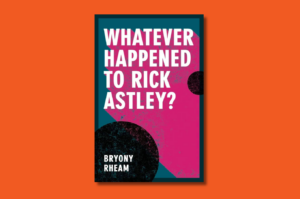
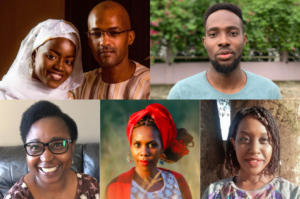
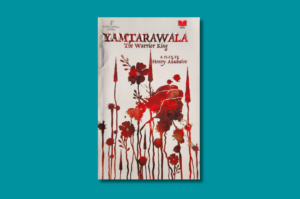
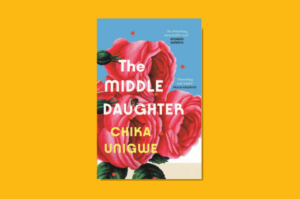

Ifésinàchi September 30, 2021 04:17
Thanks to Brittle Paper